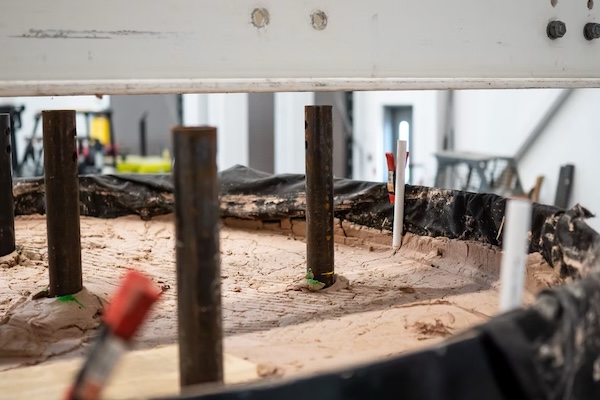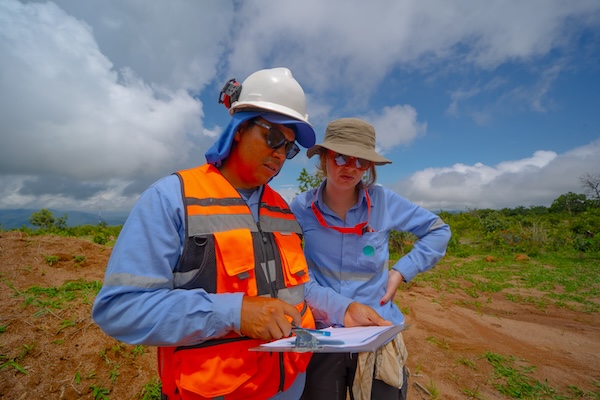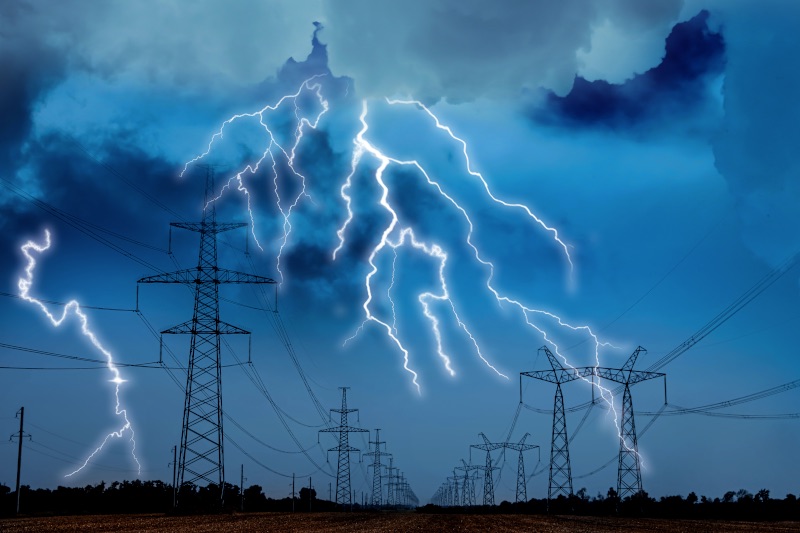Energy Storage
Craig Tropea
Solar
Jonathan Lwowski
Solar
Steve Macshane, CESSWI

Primary Hydrogen Corp. (TSXV: HDRO) (FSE: 83W0) (OTCQB: HNATF) (the "Company" or "Primary") is pleased to announce, further to its news release dated May 29, 2025, that it has closed the non-brokered private placement for gross proceeds of $1,728,800.00 (the "Offering").
Pursuant to the Offering, the Company issued (i) 2,560,000 flow-through units (the "FT Units") at a price of $0.48 per FT Unit; and (ii) 1,250,000 non flow-through units (the "NFT Units") at a price of $0.40 per NFT Unit.
Each FT Unit is comprised of one common share in the capital of the Company (a "Common Share") and one-half of one Common Share purchase warrant (a "FT Warrant"), with each whole FT Warrant exercisable to acquire one Common Share at a price of $0.55 for a period of 24 months following the closing date of the Offering (the "Closing Date"). Each NFT Unit is comprised of one Common Share and one-half of one Common Share purchase warrant (a "NFT Warrant"), with each whole NFT Warrant exercisable to acquire one Common Share at a price of $0.50 for a period of 24 months following the Closing Date.
The gross proceeds from the sale of the NFT Units are intended to be used for general working capital and corporate purposes. The gross proceeds from the sale of the FT Units are intended to be used to incur Critical Mineral Canadian Exploration Expenses ("CEE"), such that they qualify as "flow-through mining expenditures" for the purposes of the Income Tax Act (Canada) and can be renounced to the purchasers thereof.
Pursuant to the Offering, the Company paid finder's fees of approximately $43,776 in connection with the FT Units and issued 27,000 finder warrants to an eligible finder in connection with the NFT Units (the "NFT Finder Warrants") and 91,200 finder warrants to eligible finders in connection with the FT Units (the "FT Finder Warrants"). Each NFT Finder Warrant entitles the holder to purchase one Common Share at a price of $0.50 for period of 24 months following the Closing Date. Each FT Finder Warrant entitles the holder to purchase one Common Share at a price of $0.55 for a period of 24 months following the Closing Date.
Wicheeda Acquisition
The Company is also pleased to announce, further to its news release dated May 22, 2025, that it has received approval from the TSX Venture Exchange in respect of its property option agreement dated May 21, 2025 (the "Option Agreement") with Power One Resources Corp. ("Power One") pursuant to which the Company has the option to acquire up to a 75% interest in and to the Wicheeda North project (the "Wicheeda Project") in British Columbia on the terms and conditions set forth in the Option Agreement. Accordingly, in satisfaction of certain option exercise conditions under the Option Agreement, the Company has paid to Power One $40,000 and will be issuing to it (i) 125,000 Common Shares at a deemed price of $0.45 and (ii) 125,000 Common Share purchase warrants (the "Wicheeda Warrants"), with each Wicheeda Warrant entitling Power One to acquire one Common Share at an exercise price of $0.90 for three years from the date of the Option Agreement. The Common Shares to be issued, and the Common Shares underlying the Wicheeda Warrants, are subject to a 4-month statutory hold period in accordance with applicable securities laws. The Option Agreement is an arm's length transaction. No finder's fee was paid in connection with the Option Agreement.
Primary Hydrogen | https://primaryh2.com/

The Wisconsin Wildlife Federation (WiWF) and Vista Sands Solar are pleased to announce a mutual agreement has been reached on the planned solar development in Portage County, Wisconsin. As part of the agreement, and pending formal approval by the Public Service Commission of Wisconsin (PSC), WiWF will be withdrawing its appeal filed in Columbia County Circuit Court.
The agreement comes after several months of collaborative discussions aimed at protecting Wisconsin’s state-threatened Greater Prairie Chicken – while maintaining the full capacity and progress of the renewable energy project. It reflects productive engagement and a shared interest in preserving Wisconsin’s natural heritage, while supporting sustainable homegrown energy generation.
Vice President of Development at Doral Renewables and Project Manager for the Vista Sands Solar project, Jon Baker, said: “From day one, this project has been shaped by a simple, commonsense goal: deliver clean, homegrown energy and economic uplift, while respecting nearby conservation lands, the people who work it, and the wildlife that inhabit it. Thanks to direct feedback from local leaders, adjustments have been made to further protect wildlife habitat and mitigate stakeholders’ concerns – demonstrating that energy progress and environmental stewardship are not at odds.”
“Vista Sands Solar made a tremendous effort to communicate and present accommodations that addressed the concerns raised by our technical working group,” said Cody Kamrowski, Executive Director of the Wisconsin Wildlife Federation. “This agreement shows what’s possible when conservation organizations and energy developers engage, listen to one another, and work toward a shared vision.”
As part of the agreement Vista Sands Solar is building on its existing commitments to restoring nearly 7,000 acres of native grasslands in the region, providing a $2.1 million contribution to support the Wisconsin Department of Natural Resources’ (DNR) Greater Prairie Chicken management plan, and funding for local university-led research to study how wildlife interacts with solar.
Key Elements of the Agreement:
This settlement is a model for future collaboration between stakeholder groups and energy developers. It sends a powerful message: with good-faith engagement and open dialogue, environmental stewardship and renewable energy goals are not mutually exclusive.
“This agreement sets a strong precedent for public lands and wildlife protections in Wisconsin,” Kamrowski added. “It demonstrates that renewable energy and habitat preservation can – and should – go hand in hand.”
WiWF encourages other conservation and community organizations to engage early with developers on similar projects. Moving forward, WiWF will advocate for the inclusion of stakeholder voices, including the Department of Natural Resources (DNR) advisory committees, during the early stages of project planning and permitting.
The Wisconsin Wildlife Federation looks forward to continued partnerships that protect the state’s rich natural heritage while advancing a clean energy future.
Vista Sands Solar | vistasandssolar.com
Wisconsin Wildlife Federation | www.wiwf.org

GE Vernova Inc. (NYSE: GEV) celebrated the 25th anniversary of its global onshore wind turbine component remanufacturing center in Noblejas, Toledo. By remanufacturing and extending the life of existing components the facility demonstrates the company's dedication to the circular economy and the energy transition.
The event was attended by local and regional authorities, including Esther Haro Carrasco, the General Director of Circular Economy and Agenda 2030, who emphasized: “The Noblejas facility symbolizes GE Vernova's commitment to a sustainable, innovative and resilient development model that contributes significantly to social and environmental progress. Noblejas has managed to position itself as a leading industrial center at regional, national and international levels."
Agustín Jiménez Crespo, the mayor of Noblejas, stressed that “the arrival of GE Vernova marked a turning point for Noblejas. It has been our calling card, the starting point for all the industrial and innovative development that has occurred since.”
The Noblejas facility remanufactures components, such as gearboxes, main shaft, hubs and complete machine head rebuilds, for GE Vernova and other leading global onshore wind energy manufacturers. Remanufacturing wind turbine components involves reconstructing worn or damaged parts to meet or exceed original specifications.
Spanning more than 14,000 square meters and employing over 110 people, including contractors, the center has experienced record growth of over 250% in units sold over the last five years. A strategic expansion in 2021 enabled the center to transform into a facility that supplies markets around the world with a range of products and technologies, including those in Europe, Latin America, the Middle East, and North Africa.
During the event, Sergio Barroso, Global Director of Onshore Wind Remanufacturing and Director of the Noblejas facility, stated: “Noblejas is Spain's international hospital for wind turbine components. It plays an essential role in the global wind energy value chain and is a benchmark in knowledge transfer, with processes that have already been replicated in the United States, Brazil, and India.”
Since its inception, the facility has adopted a continuous improvement approach, using the Lean methodology to enhance operational safety and reduce response times. This methodology has been applied to tools, operational processes and standardized technical work.
In 2024 alone, the facility's operations prevented the production of around 4,500 tons of steel, significantly reducing emissions and enhancing energy system efficiency. The facility's strong focus on circular economy principles has established it as a driver of sustainable development and a source of quality employment in the local area.
The center also collaborates closely with educational institutions and vocational training programs to integrate local talent into the industrial sector. Thanks to its dynamism, GE Vernova's remanufacturing center in Noblejas has become one of the main industrial hubs in Castilla-La Mancha, ranking among the top five companies in the region in terms of employment and revenue.
Blanca Monteagudo, GE Vernova's Sales Director for Western Europe and Latin America, said: “GE Vernova is a global company committed to the energy transition and the circular economy. Spain is a key country for our wind power business. With 337 megawatts of new capacity installed in 2024, we were the leading installer of onshore wind power in Spain that year. The Noblejas facility is a clear reflection of that commitment, serving as an innovation center that strengthens the sustainability and resilience of the electricity system in Castilla-La Mancha."
GE Vernova I https://www.gevernova.com/

Heliene Inc., a customer-first provider of North American-made solar PV modules, announced the sale of the 2025 Section 45X Advanced Manufacturing Production Tax Credit (45X credits). The transaction has been possible thanks to the environmental finance leadership of Minneapolis-based U.S. Bank.
Heliene claimed eligibility for these 2025 tax credits under the guidelines of the Inflation Reduction Act’s Section 45X. Heliene manufactures high-quality, U.S.-made solar modules that feature a high volume of domestically-sourced components at two Minnesota facilities: one in Mountain Iron, MN and a second in Rogers, MN that came online in spring 2025. Across these two facilities, Heliene’s annual U.S.-based domestic solar module manufacturing capacity is 1.3GW, employing more than 500 Minnesotans in well-paying clean energy careers.
U.S. Bank – through its subsidiary U.S. Bancorp Impact Finance – is one of the most active renewable energy investors and among the largest tax credit syndicators in the country. Through 45X tax credit syndications, it supports domestic production and investment in renewable energy technologies while providing investors predictable streams of tax benefits with customized tax credit portfolios aligned to environmental goals.
This transaction marks the second tax credit transfer sale completed by Heliene in the past year. In September 2024, the Company sold an estimated $50M in 2023 and 2024 45X tax credits in one of the first deals of this kind for the solar manufacturing industry. The sale of 2025 credits affirms Heliene’s position as a leading domestic solar manufacturer and underscores continued demand for U.S. clean energy manufacturing. This transaction also represents Heliene and U.S. Bank’s shared commitment to driving job growth and economic development in the state of Minnesota.
“We’re very proud to have worked with U.S. Bank on our second 45X tax credit transfer deal. Their position as a leading national brand and their commitment to furthering economic development across Minnesota made them an ideal partner for this transaction,” said Martin Pochtaruk, CEO of Heliene, Inc. "In monetising these additional tax credits, we can maintain our commitment to building a stronger, domestic solar supply chain and grow our Minnesota workforce to meet the target of American energy dominance.”
“We are excited to leverage our custom financing solutions to help Heliene expand, create quality manufacturing jobs in U.S. Bank’s home state of Minnesota and support clean energy access,” said Adam Altenhofen, Impact Finance senior vice president of environmental finance production. "By incentivizing domestic production and investment in renewable energy, the 45X tax credit is already playing an important role in bolstering U.S. jobs and fostering economic growth.”
This transaction follows the grand opening of Heliene’s Rogers, MN solar manufacturing facility in late May 2025. With an expanded U.S. footprint and funds from the sale of 2025 tax credits, the Company will continue its commitment to strengthen U.S. energy independence through domestic manufacturing and job creation. The Company also received a $2.9M contribution from the Minnesota Department of Employment and Economic Development (DEED) to support job creation for its new facility.
Heliene | www.heliene.com

Triton Anchor a subsea innovation company based in Scotland, Norway, and the United States, announced it has been awarded two patents in the United States for its proprietary offshore anchor and subsea deployment tool, with a notice of allowance for the anchor patent also received in Japan. These newly patented technologies mark a major advancement in enabling low-cost, low-impact deployment of floating wind, solar, and wave platforms. They cut capital and installation costs, use smaller vessels, reduce environmental impact, and support local jobs through near-site manufacturing.

Unlike legacy anchors that rely on heavy infrastructure and cause significant seabed impact, the Triton Anchor and Triton Anchor Deployment system is an industry-first for floating renewables, using clusters of commercial off the shelf helical anchors combined with a template and skirt. Its fully reusable, modular design is optimised for fast, low-impact installation and removal which provides significant cost savings and environmental benefits to end users.
 Nick Ritchie, Triton Anchor CEO, said: “These patent awards confirm that our innovative anchoring approach is unique and has long term value to multiple floating industries. Our technology removes key barriers to scaling floating renewables by simplifying project planning, reducing installation costs, and enabling profitable deployment from shallow to ultra deep waters across many emerging markets.
Nick Ritchie, Triton Anchor CEO, said: “These patent awards confirm that our innovative anchoring approach is unique and has long term value to multiple floating industries. Our technology removes key barriers to scaling floating renewables by simplifying project planning, reducing installation costs, and enabling profitable deployment from shallow to ultra deep waters across many emerging markets.
“With further patent filings in process we are confident that this strengthens our position as the anchor of choice for floating offshore wind and other floating renewable energy markets across the world.”
The company is currently exploring strategic investment opportunities to accelerate global commercial l deployment. By 2040, the floating renewable energy market (combining floating wind, floating solar and ocean energies) is projected to need nearly *40,000 anchors globally, which creates a total accessible market to Triton Anchor of £7.2 billion ($8.9 billion) in revenue.
Triton Anchor | https://www.tritonanchor.com/
*Source: Anchor demand projections are based on global floating renewable energy forecasts from 4C Offshore

The International Solar Alliance (ISA) will host the next editions of its flagship initiatives—the CEO Caucus and the International Solar Festival (ISF)—at World Expo 2025 in Osaka, Japan, from 3–4 July 2025. These platforms will bring together global leaders, innovators, policymakers, and community champions to advance the global solar transition and foster collaboration across regions.
 Launched in 2024, the CEO Caucus and International Solar Festival (ISF) have emerged as key platforms shaping the future of solar energy deployment and innovation.
Launched in 2024, the CEO Caucus and International Solar Festival (ISF) have emerged as key platforms shaping the future of solar energy deployment and innovation.
“The CEO Caucus and International Solar Festival are not just flagship initiatives of ISA—they are dynamic, global convenings for public-private collaboration, youth-led innovation, and transformative solar action. By hosting them at World Expo 2025 in collaboration with the Ministry of New and Renewable Energy (MNRE), ISA is deepening its commitment to transforming solar movement from Ambition to Action. While India’s progress offers a powerful role model for Global South — reaching 224 GW of renewable capacity as of April 2025, including 108 GW from solar— these platforms are about global momentum bringing together India, Japan and ISA’s 124 member countries by sharing stories, building partnerships, and enabling jobs led solar growth,” said Mr Ashish Khanna, Director General, International Solar Alliance.
The 2025 CEO Caucus, themed “Forging the Future of Solar: India-Japan Innovations for a Sustainable Asia’ will focus on unlocking new opportunities for cross-border investment, resilient supply chains, and clean energy innovation. A key highlight will be the India–Japan Solar Industry Roundtable, which will explore collaboration in battery storage, green hydrogen, and solar manufacturing—supporting India’s ambition of 500 GW of renewable capacity by 2030. The Osaka edition builds on the first 2025 CEO Caucus roundtable held in Brussels in June, which explored Europe’s role in diversifying and strengthening global solar value chains.
International Solar Festival: Stories of Impact and Innovation — The second International Solar Festival will spotlight transformative solar stories from youth, entrepreneurs, and communities through:
• Young G Limitless: Leading the Solar Takeover – a spotlight session where young changemakers and technology influencers reimagine the solar future.
• Dastan-e-Aftaab (Story of the Sun) – a mesmerising cultural performance celebrating our shared solar heritage and the universal significance of the sun.
The Festival’s first edition in New Delhi (September 2024) attracted thousands and celebrated solar energy’s power to transform lives, fuel dreams, and empower communities. The Festival focused on four key themes: Youth Engagement, Gender Inclusion, Entrepreneurship G Private Sector Engagement, and Community Empowerment—amplifying underrepresented voices and harnessing the energy of youth and innovators to make solar both aspirational and accessible.
Scaling Up Global Solar Collaboration
Both platforms are now being positioned as annual global convenings for solar advocacy, policy dialogue, and investment mobilisation. CEO Caucus roundtables are also planned across Africa, Asia-Pacific, and Latin America C the Caribbean in 2025. Reflecting on these global platforms, Mr Khanna added: “The CEO Caucus and International Solar Festival are not just milestones—they are movements. They embody our belief that solar energy can unite nations, transform lives, and accelerate the sustainable future we all aspire to. Through leadership, innovation, and youth-led action, we are building the solar-powered tomorrow the world urgently needs. We invite stakeholders from across the ecosystem to join us in Osaka and be part of this shared journey.”
Event Details:
• CEO Caucus: Forging the Future of Solar: India-Japan Innovations for a Sustainable Asia:
3 July 2025 | Bharat Pavilion, World Expo 2025
• International Solar Festival: 4 July 2025 | Bharat Pavilion, World Expo 2025
ISA welcomes participation from government representatives, industry leaders, innovators, financiers, youth organisations, and civil society.
The World Expo 2025, organised by the Bureau International des Expositions (BIE), is currently underway in Osaka, Japan, from April 13 to October 13, 2025. Themed “Designing Future Society for Our Lives,” the Expo focuses on three sub-themes: Saving Lives, Empowering Lives, and Connecting Lives. It serves as a global platform for innovation, collaboration, and transformative solutions to shape a better future. With 28 million visitors expected, the Expo is a landmark event driving conversations and action for tomorrow’s societies.
International Solar Alliance | https://isa.int/

Base Power, a fast-growing distributed energy company, and GVEC, a leading energy distribution cooperative in Texas, announced a partnership to deploy a utility-managed fleet of residential batteries, starting in communities built by Lennar, one of the nation’s leading homebuilders. The battery systems will be operated directly by GVEC using Base Power’s proprietary software platform. The agreement builds on Base’s ongoing collaboration with Lennar.
The partnership represents an innovative, utility-led model for utilizing residential battery systems to support the Texas grid. GVEC will dispatch the battery fleet using Base’s software platform to lower transmission and energy costs for GVEC members. Participating homeowners will get industry-leading whole-home backup and receive access to the Base app for insight into their system’s activity and backup performance.
“Today is an exciting milestone for Base as we expand our work with utilities across Texas,” said Zach Dell, CEO of Base Power. “Our model enables the rapid deployment of cost-effective distributed storage that is fully dispatchable for our utility partners. GVEC has been at the forefront of embracing technology to strengthen the grid, and we’re excited to partner with them to improve resiliency and reduce costs for their members.”
GVEC and Base will pursue qualification of the battery fleet for participation in ERCOT’s Aggregated Distributed Energy Resource (ADER) pilot program. This will allow the cooperative to unlock additional grid value while maintaining backup capabilities for participating members.
“GVEC is embracing new programs, technologies and partnerships that advance the growth of distributed energy-based solutions across our South-Central Texas service area,” said GVEC General Manager and CEO Darren Schauer. “We are excited to work with Base Power in offering our Lennar members the opportunity to build new homes equipped to incite long-term affordability and grid resiliency from the start. This is an inventive, modern way to meet the needs of our members and the energy industry.”
The pilot begun deployment in June 2025 and builds on Base’s growing momentum in partnering with forward-thinking utilities. This partnership with GVEC underscores the opportunity for distributed battery storage to be rapidly deployed to support grid operations. GVEC serves more than 100,000 members across a 3,200-square-mile region in South Central Texas.
Base Power | www.basepowercompany.com
GVEC | https://www.gvec.org/
Energy Storage Jun 18, 2025
When was the last time you pulled up at a gas station and had to leave empty handed? It speaks volumes for fuel retailers that reliability is a given on the forecourt, but that experience has set a high bar for charge point operators (CPOs) and those....



Building codes and minimum building standards such as ASCE 7, Eurocode, and the National Building Code of Canada, are used to calculate the maximum forces a building may encounter. These forces result from wind, snow and seismic activity. For wind up....
The National Oceanic and Atmospheric Administration (NOAA) estimates that in 2024 alone, the United States experienced 27 weather- and climate-related billion-dollar disaster events, with losses totaling $182.7 billion. Severe convective storms — a....
As the world transitions to clean energy, one of the biggest challenges facing the solar industry isn’t technology or financing — It’s labor. The demand for skilled workers to install and maintain solar infrastructure far exceeds supply, threat....
Renewable energy sources such as wind an....
When was the last time you pulled up at a gas station and had to leave empty handed? It speaks volumes for fuel retailers that reliability is a given on the forecourt, but that experience has set a high bar for charge point operators (CPOs) and those....
Recent export restrictions by China on key rare earth elements such as dysprosium and terbium have brought renewed attention to the global importance of these materials. As China implements new licensing requirements, particularly for eleme....
According to a recent report from the US Energy Information Administration, though 2024 saw record-setting levels of energy consumption, demand isn’t slowing down anytime soon. This comes less than six months after a separate reporte....
How can one know the climate impact of a purchase or investment? Clean energy production is about climate mitigation, but how can one know the climate impact of a purchase or investment? Many investors and buyers want to understand how t....
There is no question that weather events place enormous stress on the country’s power grids. Nowhere is this more clearly on display than in the renewable energy market, including the turbulent conditions of the offshore wind industry. As....
Hydrogen peroxide (H2O2) is well known as a household disinfectant, but in its concentrated forms, it has a powerful second life as a clean and efficient propellant used in space applications. When decomposed, H2O2 breaks down into oxygen and wa....